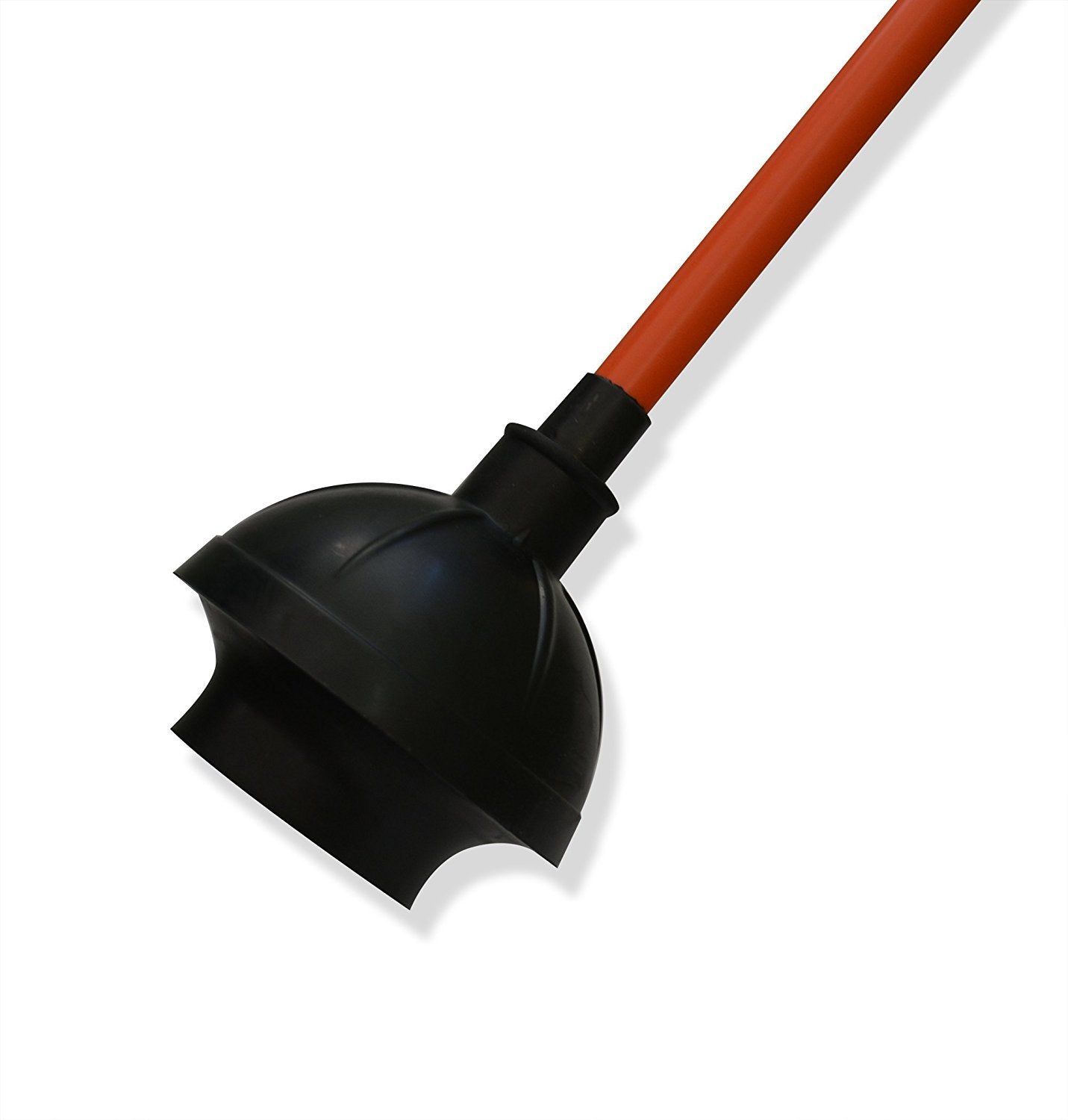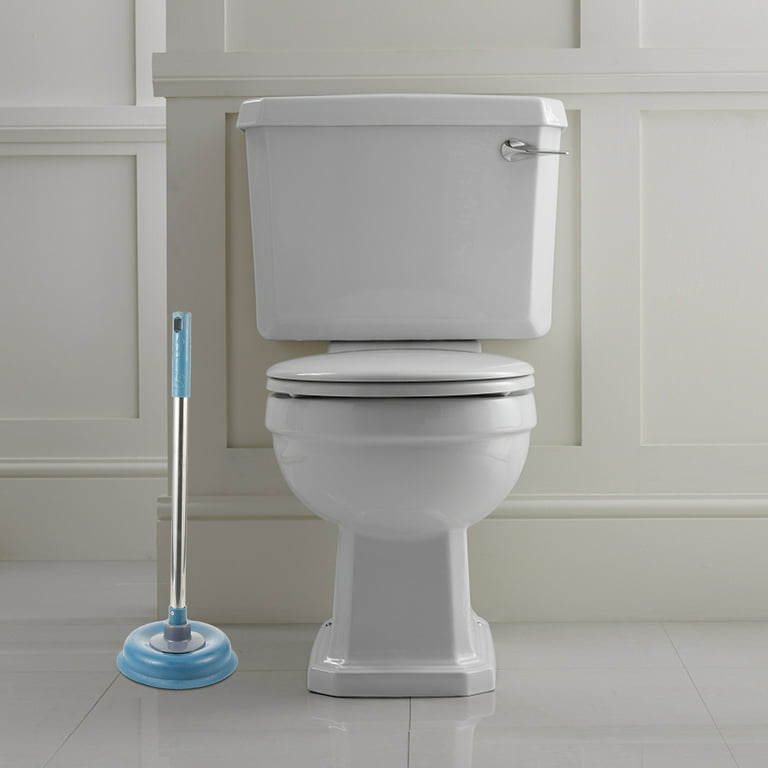Improving Plungers and Drain Cleaner: Professional Strategies
Improving Plungers and Drain Cleaner: Professional Strategies
Blog Article
They are making a few great pointers on How To Use Your Toilet Plunger Correctly in 5 Easy Steps overall in this content followed below.

Introduction
Correct upkeep of home drains is necessary for stopping clogs and making certain smooth water flow. Among the secret devices in every property owner's toolkit is the bettor, alongside numerous drain cleaners made to tackle persistent obstructions efficiently. This write-up explores exactly how to utilize bettors and drain cleaners successfully to keep your drains streaming freely.
Section 1: Recognizing Bettors
Sorts of Plungers
There are numerous sorts of bettors available, each designed for different types of drains pipes and obstructs. One of the most usual kinds include cup bettors, flange plungers, and accordion plungers.
How Plungers Job
Bettors work on the concept of creating stress and suction to dislodge clogs. When properly applied over a drain, they create a vacuum cleaner that can pull out debris or separate blockages.
Choosing the Right Bettor
Selecting the ideal plunger depends upon the type of drain and the nature of the blockage. Mug bettors are perfect for sinks and bathtubs, while flange bettors are much better suited for bathrooms as a result of their design.
Common Errors with Plungers
Avoiding these blunders ensures effective plunging: incorrect seal around the drainpipe, inadequate pressure, and unclear bordering particles.
Area 2: Using Plungers Effectively
Preparation
Prior to diving, make sure the plunger covers the drain entirely and creates a tight seal. Clear any noticeable particles around the drain opening.
Strategy
Start with gentle diving movements to construct suction. Boost stress slowly, making use of a stable rhythm. Repeat as needed until the drainpipe removes.
Troubleshooting Tips
If diving doesn't function, try changing the seal, applying petroleum jelly for a much better seal, or making use of a different sort of plunger.
Area 3: Understanding Drainpipe Cleaning Company
Kinds Of Drainpipe Cleaning Company
Drain cleaners can be chemical or chemical. Chemical cleansers use strong chemicals to dissolve blockages, while chemical cleansers make use of natural enzymes to break down organic matter.
Exactly How Drain Cleansers Job
Chemical cleansers respond with blockages to liquify them, while chemical cleansers break down natural materials like hair and grease without hurting pipes.
Safety Considerations
Always put on handwear covers and eye defense when utilizing chemical drain cleaners. Make certain appropriate air flow and adhere to producer directions meticulously.
Eco-Friendly Alternatives
Take into consideration making use of vinegar and cooking soft drink or enzyme-based cleansers for environment-friendly options that are more secure for pipelines and the environment.
Area 4: Utilizing Drainpipe Cleansers Effectively
Application Methods
Put chemical cleaners straight into the drain opening. Permit them to work for the suggested time prior to flushing with hot water. Chemical cleansers must rest overnight.
Safety measures
Stay clear of blending different types of cleaners, as this can create poisonous fumes. Never ever use chemical cleaners together with a bettor, as spilling can happen.
Taking Care Of Persistent Obstructions
For persistent clogs, consider using a pipes serpent or calling a specialist plumbing professional to stop damage to pipes.
Conclusion
Finally, recognizing exactly how to utilize plungers and drainpipe cleaners effectively is important for keeping healthy and balanced plumbing systems. By picking the right tools and strategies, house owners can tackle small blockages and protect against major pipes issues down the line.
How To Properly Use A Plumbing Snake To Clear Drains
When any drain clogs in our home arise, we tend to gravitate toward the plunger and little else. In cases where the plunger and its vacuum-created pressure are not able to clear clogs, many immediately move to harmful chemicals or simply call their plumber to fix the issue.
we’re happy to help with all drain cleaning needs and concerns. This includes informing you on a few other home remedies you may have at your disposal for minor to moderate clogs, one of which is the use of a plumbing snake. Many people have never used one of these before – let’s go over the steps to take when your drain clogs and you have a plumbing snake available.
Attempt Plunger Use
The first step here, as we noted above, should indeed be to grab your plunger when you notice a drain clog and attempt to resolve it this way. If you’re unsure how to use a particular type of plunger, our plumbers can answer any questions you have. If this doesn’t do the trick, however, you move on to the snake.
Locate And Prepare Snake
A plumbing snake is a metal or plastic device that’s generally about a quarter of an inch thick. It’s design with significant extensions, meant to reach down into your clogged drain and push the clog out. Snakes also contain drain augers that will latch onto and push stubborn blockages.
If your plunger doesn’t clear a clog, locate your snake and bring it to the drain in question. We also recommend keeping a bucket nearby to collect the clog once you pull it out, plus we’d advise wearing goggles and possibly protective gloves.
Feed Snake
Once you’re ready to go, feed the snake slowly down the drain, using the crank device it comes with to keep it moving until it finds the clog. Once this happens, much of the clog will be latched onto the coil so you can pull it out, while the rest will simply break up and flow downward.
Detach Debris
Remove the snake slowly from the drain, and once you’ve done so, pick off any debris that’s stuck to the coil. This is another area where wearing gloves is a must.
Flush Drain
Finally, take a few minutes to ensure the snake has done its job correctly. If you’ve been using it on a toilet, flush the toilet a couple times and make sure everything flows well. If you’ve used it on a different drain, flush it with some room temperature water.
https://www.mybuddytheplumber.com/blog/how-to-properly-use-a-plumbing-snake-to-clear-drains/

Application Methods
Put chemical cleaners straight into the drain opening. Permit them to work for the suggested time prior to flushing with hot water. Chemical cleansers must rest overnight.
Safety measures
Stay clear of blending different types of cleaners, as this can create poisonous fumes. Never ever use chemical cleaners together with a bettor, as spilling can happen.
Taking Care Of Persistent Obstructions
For persistent clogs, consider using a pipes serpent or calling a specialist plumbing professional to stop damage to pipes.
Conclusion
Finally, recognizing exactly how to utilize plungers and drainpipe cleaners effectively is important for keeping healthy and balanced plumbing systems. By picking the right tools and strategies, house owners can tackle small blockages and protect against major pipes issues down the line.
How To Properly Use A Plumbing Snake To Clear Drains
When any drain clogs in our home arise, we tend to gravitate toward the plunger and little else. In cases where the plunger and its vacuum-created pressure are not able to clear clogs, many immediately move to harmful chemicals or simply call their plumber to fix the issue.
we’re happy to help with all drain cleaning needs and concerns. This includes informing you on a few other home remedies you may have at your disposal for minor to moderate clogs, one of which is the use of a plumbing snake. Many people have never used one of these before – let’s go over the steps to take when your drain clogs and you have a plumbing snake available.
Attempt Plunger Use
The first step here, as we noted above, should indeed be to grab your plunger when you notice a drain clog and attempt to resolve it this way. If you’re unsure how to use a particular type of plunger, our plumbers can answer any questions you have. If this doesn’t do the trick, however, you move on to the snake.
Locate And Prepare Snake
A plumbing snake is a metal or plastic device that’s generally about a quarter of an inch thick. It’s design with significant extensions, meant to reach down into your clogged drain and push the clog out. Snakes also contain drain augers that will latch onto and push stubborn blockages.
If your plunger doesn’t clear a clog, locate your snake and bring it to the drain in question. We also recommend keeping a bucket nearby to collect the clog once you pull it out, plus we’d advise wearing goggles and possibly protective gloves.
Feed Snake
Once you’re ready to go, feed the snake slowly down the drain, using the crank device it comes with to keep it moving until it finds the clog. Once this happens, much of the clog will be latched onto the coil so you can pull it out, while the rest will simply break up and flow downward.
Detach Debris
Remove the snake slowly from the drain, and once you’ve done so, pick off any debris that’s stuck to the coil. This is another area where wearing gloves is a must.
Flush Drain
Finally, take a few minutes to ensure the snake has done its job correctly. If you’ve been using it on a toilet, flush the toilet a couple times and make sure everything flows well. If you’ve used it on a different drain, flush it with some room temperature water.
https://www.mybuddytheplumber.com/blog/how-to-properly-use-a-plumbing-snake-to-clear-drains/

I found that post about while perusing the search engines. Are you aware of somebody else who is in to the topic? Please feel free to share it. Thanks for going through it.
Contact Us Now Report this page